Are you looking for some fun and educational activities to do with your kids? Look no further! In this article, we will explore some exciting experiments kids can do to learn about the states of matter. From making homemade ice cream to creating a cloud in a bottle, these experiments will not only be enjoyable for kids, but they will also help them learn about the properties of different states of matter and how they can change under different conditions. Grab your lab coat and let’s explore!
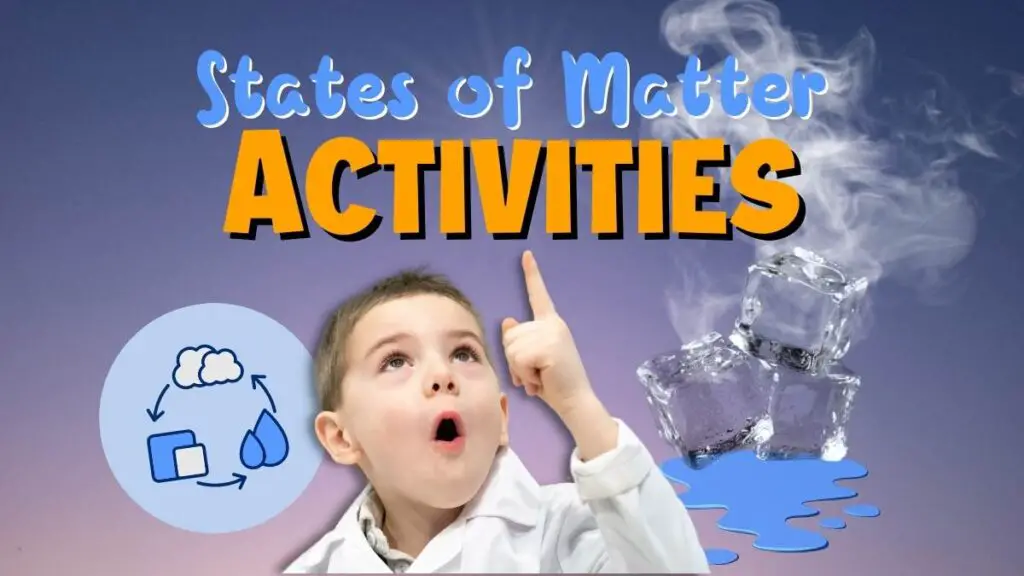
Jump to your favorite activity:
Phases of Water
Create a Cloud in a Jar
Make Homemade Ice Cream
Growing Crystals
States of Matter Explained
There are three main states of matter: solid, liquid, and gas.
Solids
- Solids are matter that has a fixed shape and volume.
- Solids are dense and hard, and they don’t flow or change shape easily.
- Examples of solids include tables, chairs, and rocks.
Liquids
- Liquids are matter that has a fixed volume, but they take the shape of their container.
- They flow and can be poured, but they are not as compressible as gases.
- Examples of liquids include water, milk, and oil.
Gases
- Gases are matter that doesn’t have a fixed shape or volume.
- They can expand to fill the space available in their container.
- Examples of gases include the oxygen in the air we breathe or the carbon dioxide we exhale.
All matter can change between states by simply adding or removing heat. For example, if you freeze a liquid it becomes a solid, or if you apply enough heat it will become a gas. We’re going to do some simple experiments to change between types of matter.
Observe the Phases of Water
We see matter changing states all the time without giving it a second thought. We can make some easy science lessons just by observing the different things we commonly do with water.
We’re most familiar with the liquid form of water, so we’ll start there.
You just need a few items to get started:
- A pot or pan
- water
- a heat source (like a stove or hot plate)
- Ice cube tray
- A thermometer
You’ll also want to have some paper towels or towels on hand for these activities because, if you mix kids and water, something is bound to get wet.
Liquid to Solid
We transform water from a liquid to a solid form all the time, probably without even thinking about it. By simply exposing water to a temperature below its freezing point of 32°F (0°C), it will turn into ice. Ice is nothing more than frozen water.
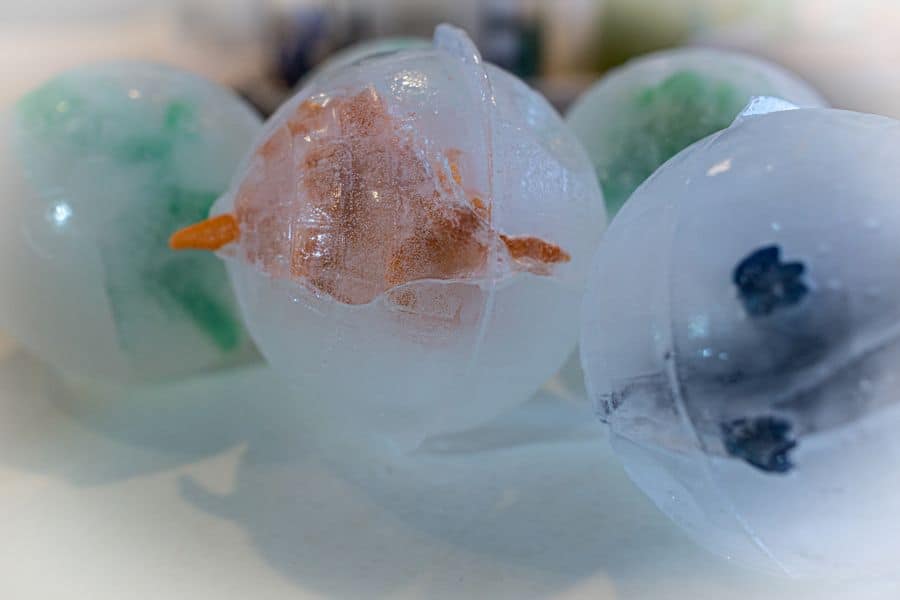
As the temperature decreases, the molecules in the water slow down and start to stick together. As they clump together, the molecules form a solid structure. We can see this in action simply by putting a cup of water in the freezer and waiting.
On cold days when it rains, we see this as sleet or snow. The water freezes into ice chunks or crystals as it falls changing state from solid rain to frozen precipitation.
Liquid to Gas
We can also change our liquid water into a gas. We do this by applying heat. Have you ever watched a pot of boiling water? The steam created is the water changing from liquid to gas form.
It’s simple to create the conditions to watch.
- Fill the pot or pan with water and place it on the heat source like a stove or hot plate.
- As the water heats up, use the thermometer to measure the temperature
- As it reaches its boiling point, observe the steam rising from the surface of the liquid.
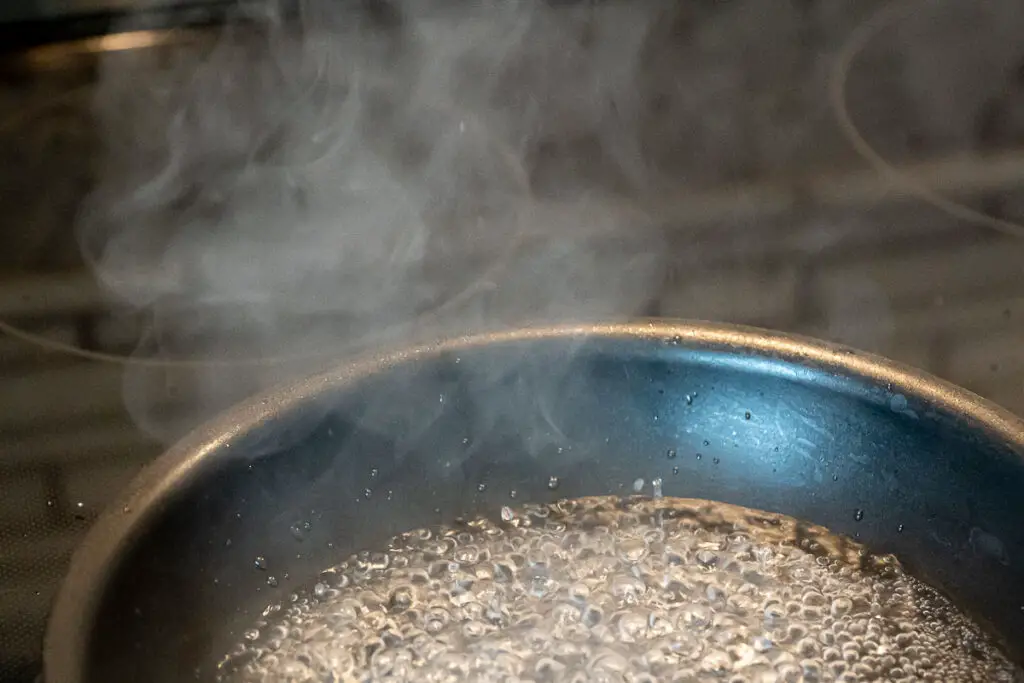
This happens because the molecules in the liquid are moving faster as the water temperature increases. This causes the molecules to break away from each other and expand. When the temperature reaches the boiling point of 212°F (100°C), the water changes state from liquid to gas, which we see as steam.
This process is called evaporation, and it’s an important part of the water cycle. Take a moment and note this the next time you’re cooking and have a pot on the stove!
Once we’ve changed our liquid water into gases and solids, we can change them back into liquid.
Gas to Liquid
We’ve seen water change from liquid to a gas by applying heat. Changing it back is as simple as cooling down the steam.
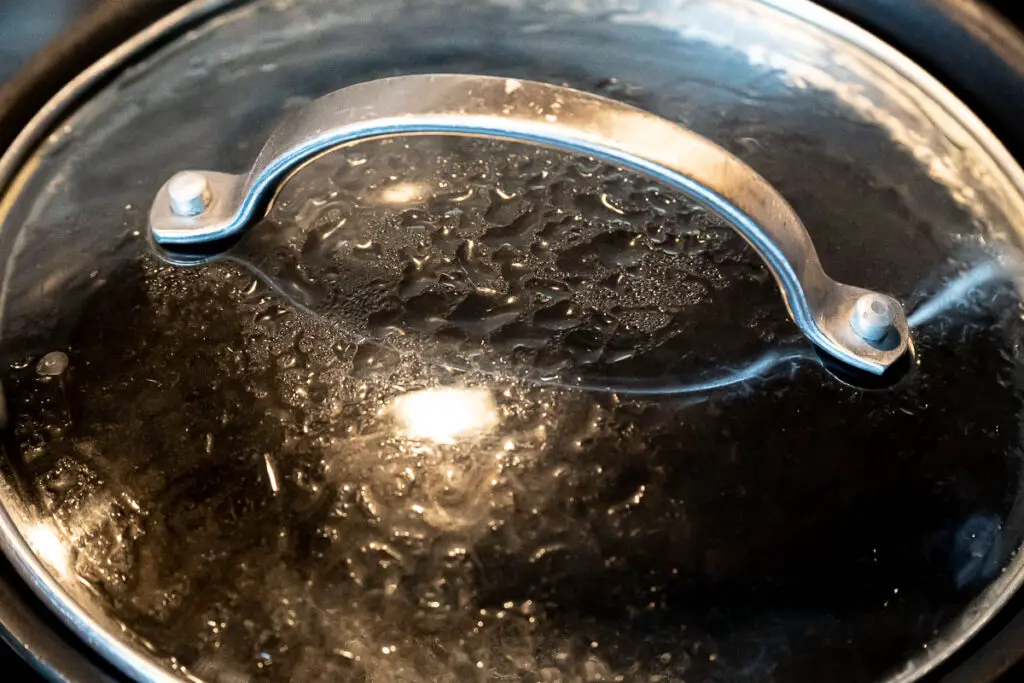
Simply cover your boiling pot with a lid, and remove it from the heat. The steam will hit the lid and begin to cool, forming condensation on the inside of the lid. You’ll see this in the form of water droplets like the phot above.
Solid to Liquid
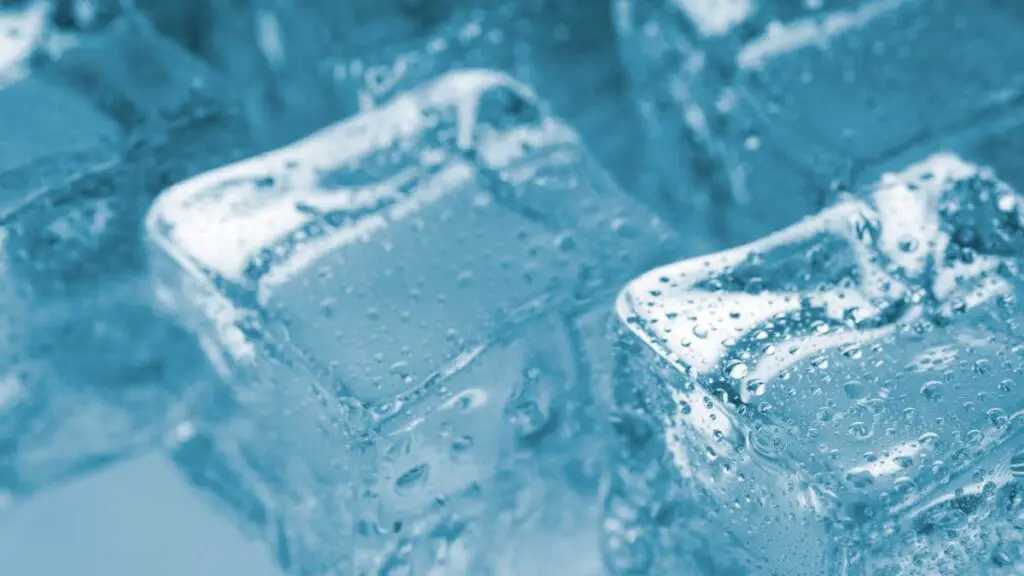
By freezing water, we’ve turned it into ice. By simply putting the ice at a temperature above freezing, the ice will melt and turn back into a liquid. We see changing states of matter happen all the time, but probably don’t realize it; when we put ice cubes into our drinks, the ice melts (and also dilutes our drink a bit if it’s something other than water.)
Create a Cloud in a Jar
Have you ever looked at the sky and wondered how clouds form or what they’re made up of? You can create the conditions to make a small cloud at home or in your classroom. This experiment demonstrates how a change in temperature can cause a change in the state of matter, in this case from a gas to a liquid.
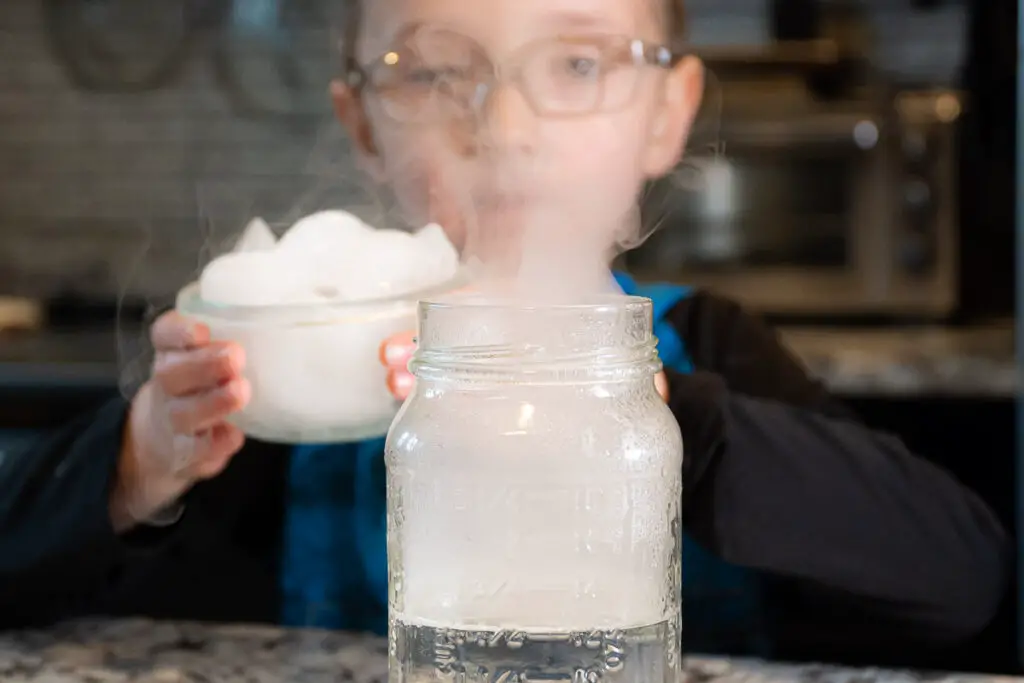
To create your very own cloud, you will need the following materials:
- A jar or bottle with a tight-fitting cap
- Hot water
- Ice Cubes
- Aerosol spray (hair spray, disinfectant, etc.)
Here are the steps for the experiment:
- Boil enough water to fill about half of your jar
- Carefully pour the water into your jar so it’s about half full
- Place the lid onto the jar and place the ice on top (if you do this with the lid upside down, it’ll help hold the ice). We used the small bowl we were keeping the ice in and just put it on top of the jar.
- Observe what happens inside the jar. You should see some water vapor clouds starting to form.
- Remove the lid and spray a bit of hairspray or aerosol inside, then quickly replace the lid.
- Observe the clouds forming.
- Take the lid (or bowl) with the ice off and let the clouds escape for a better look.
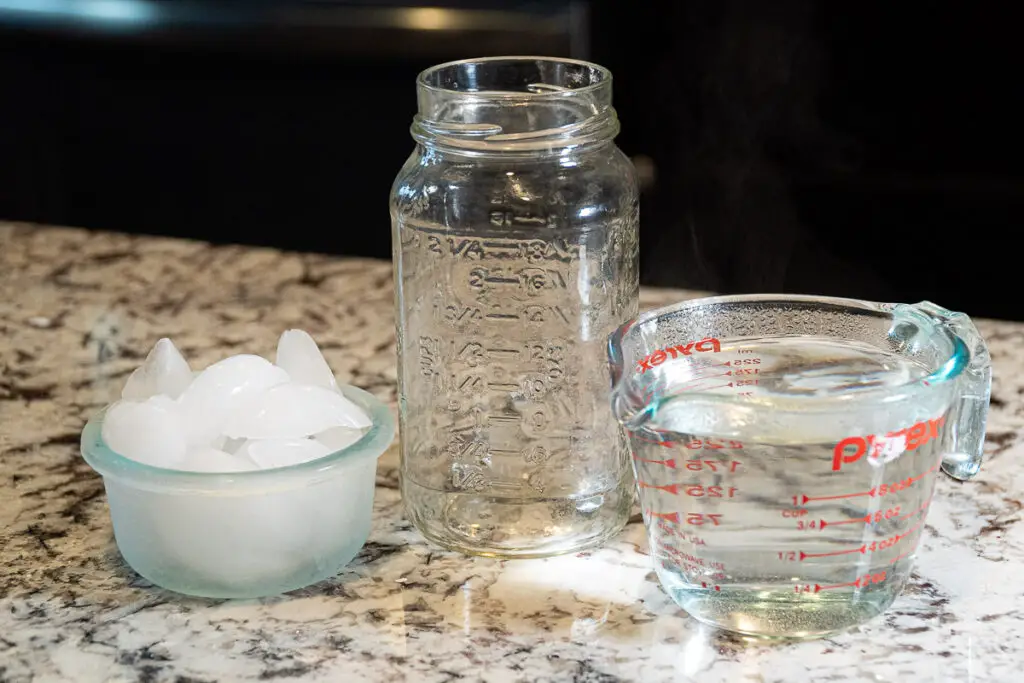
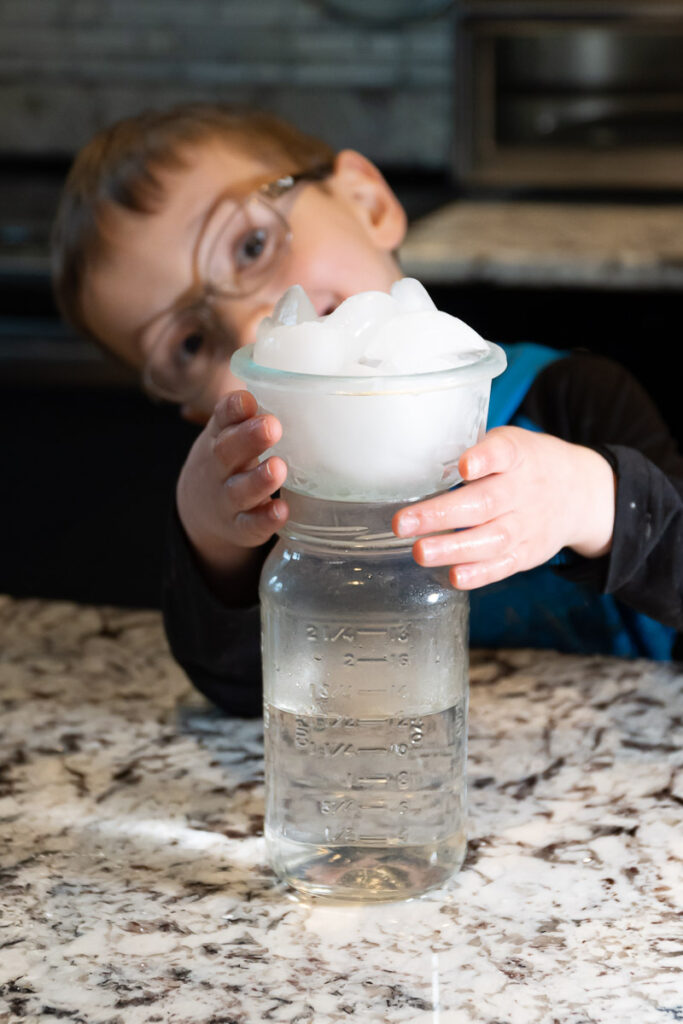
How the cloud in a bottle works:
The hot water is letting off steam, which rises to the top of the jar. The ice will quickly cool the water vapor as it rises. As the steam cools, the air inside the jar will become cooler and more humid. This will create a cloud of water vapor inside the bottle.
The particles from the aerosol (we used some disinfectant spray) give the water molecules something to cling onto, must like dust or pollen in our atmosphere. The water vapor condensing on the particles forms clouds. This happens on a grand scale in our sky, though we can create similar conditions to observe in our jar or bottle.
This is an easy science activity that demonstrates how changes in temperature can cause a change in the state of matter, and can be done with a simple container of water.
Make Homemade Ice Cream
Our kids loved this fun activity and loved the ice cream even more. They had some science fun and a delicious treat.
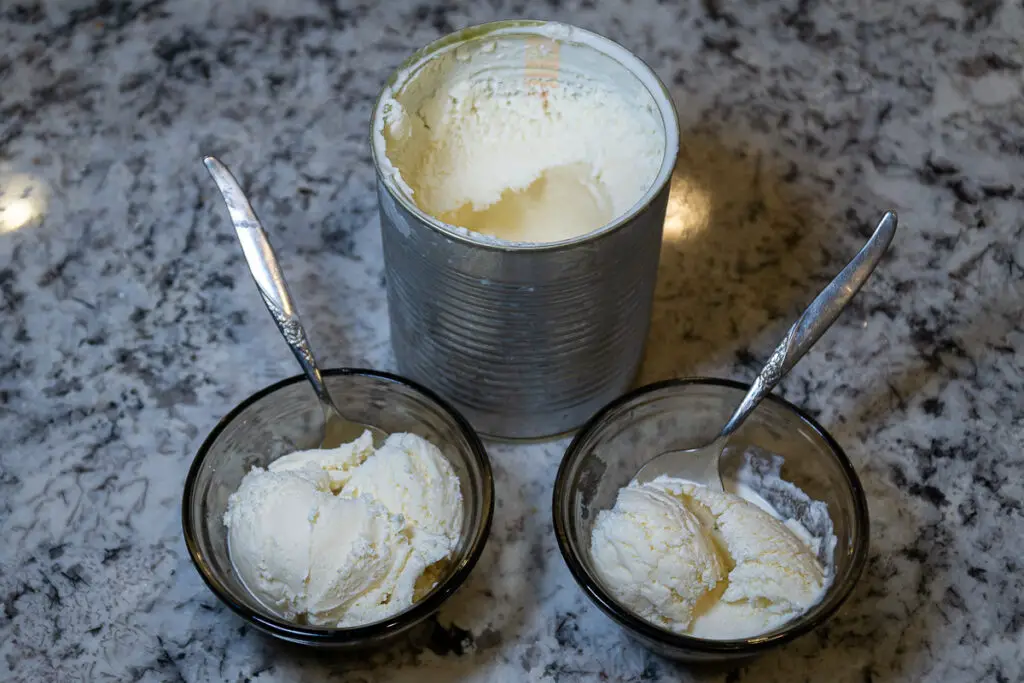
You can check out how we made ice cream using empty cans for step by step instructions, or get started here using some zip lock plastic bags:
You’ll need 2 bags; one should be large enough to fit the other inside. With just some milk, sugar, and flavoring of choice (we used vanilla) as ingredients, we can use the chemical reaction between ice and salt to drop the temperature enough to make ice cream.
Combine milk, sugar, and flavorings in a plastic bag and seal it tightly. Place this bag inside a larger bag filled with ice and salt. Shake the bags for about 5-10 minutes, until the mixture becomes thick and creamy. Be prepared – the bags will get very cold!
We’re seeing a few science concepts in action: This experiment demonstrates how the heat from the chemical reaction with the salt can cause a change in the state of the matter (from a liquid to a solid).
Growing Crystals
Growing crystals is a cool experiment for kids that demonstrates how the state of matter can change from liquid to solid. Crystals are solid materials that are made up of a repeating pattern of atoms, ions, or molecules. They can form through a process called crystallization, which occurs when a substance changes from a liquid to a solid.
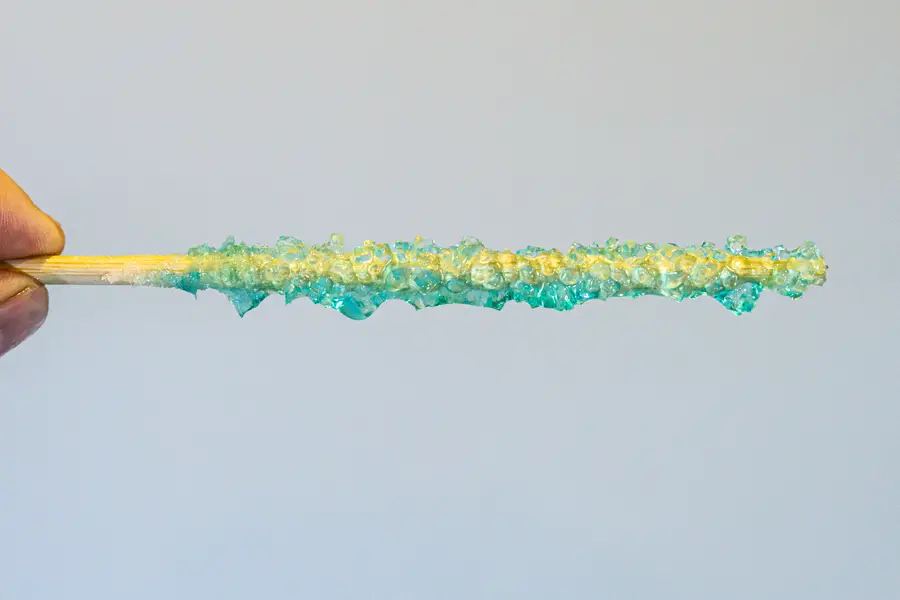
To conduct a crystal-growing experiment, you will need the following materials:
- A jar or container
- A crystal-growing solution (such as Epsom salt, sugar, or borax)
- Hot water
- A wooden stick (we used chopsticks)
Here is an overview of the steps for this experiment:
- Fill the jar or container with hot water and add a crystal-growing solution to the water. The amount of solution you use will depend on the size of the jar and the type of solution you are using.
- Stir the solution until it is fully dissolved. As the solution cools, the dissolved molecules will start to come out of the solution and form a solid crystal structure.
- Allow the solution to sit undisturbed for several hours or overnight. As the solution continues to cool, the crystals will continue to grow and become more visible.
This experiment demonstrates how the state of matter can change from a liquid to a solid through the process of crystallization. It also allows kids to learn about the properties of crystals and how they form. It encourages observation skills and critical thinking.
We made rock candy crystals in our post on kitchen science experiments if you want an experiment you can eat!
Non-Newtonian Fluids and States of Matter
Non-newtonian fluids have the characteristics of both liquids and solids, depending on the pressure applied.
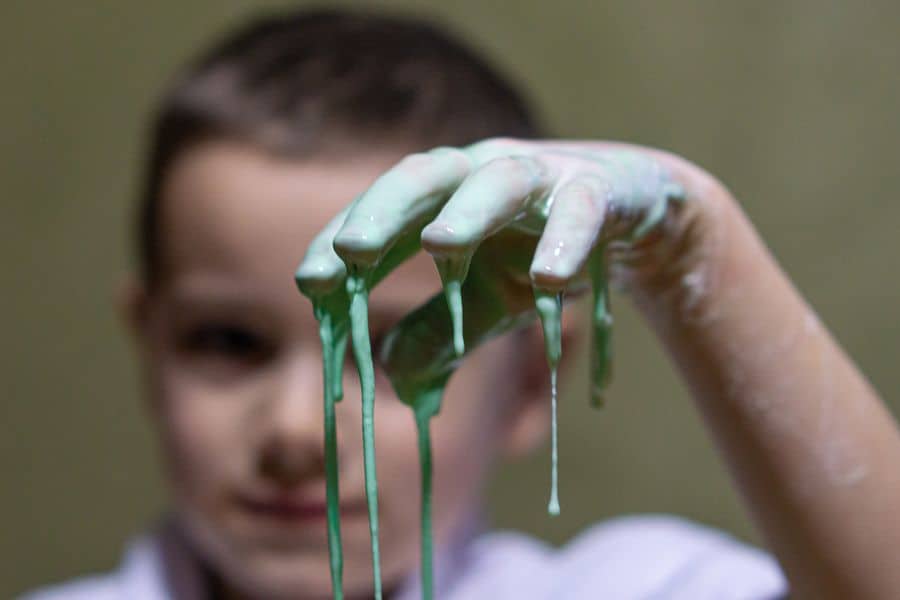
Oobleck and slime are good examples of a Non-Newtonian fluid. A Non-Newtonian fluid is not changing state of matter (it’s still a liquid), it’s just not following Newton’s Laws of Viscosity.
In this case, when atoms are impacted or under pressure, they become densely packed and hold their form; when not under pressure, the molecules relax and separate so they flow like a liquid.
Wrap Up – Science Experiments for Kids on States of Matter
Teaching kids about states of matter can be a fun and interactive experience through hands-on science experiments. These experiments can help kids learn about the properties of different states of matter and how they can change under different conditions.
By participating in activities and fun projects like these, kids will be able to apply the scientific method and use their critical thinking and problem-solving skills.
These experiments can be done at home, in a classroom, or in a lab and can be adapted to suit different age groups, making them an excellent tool for teaching kids about changing states of matter.

